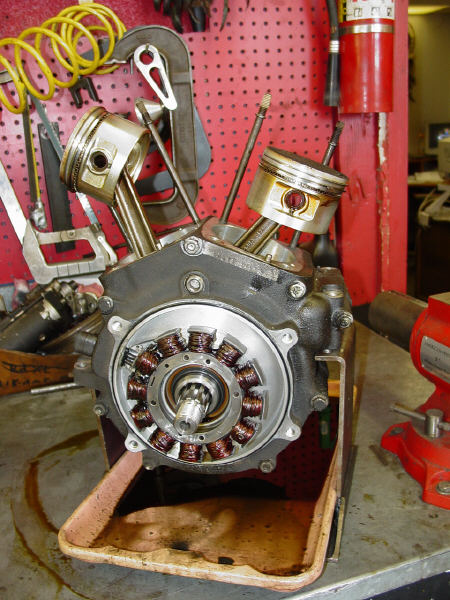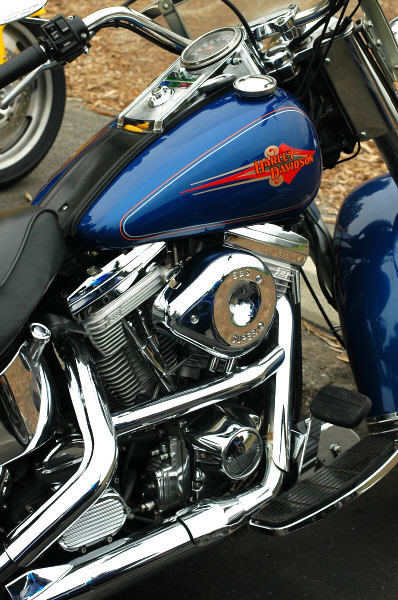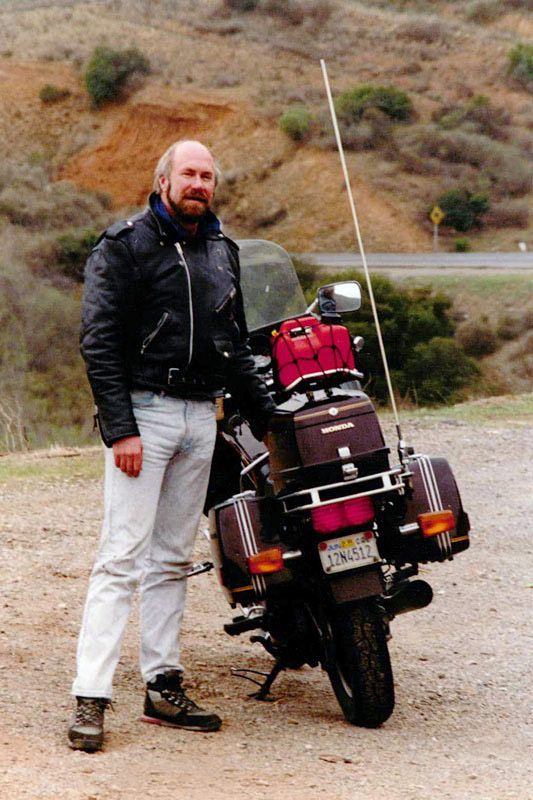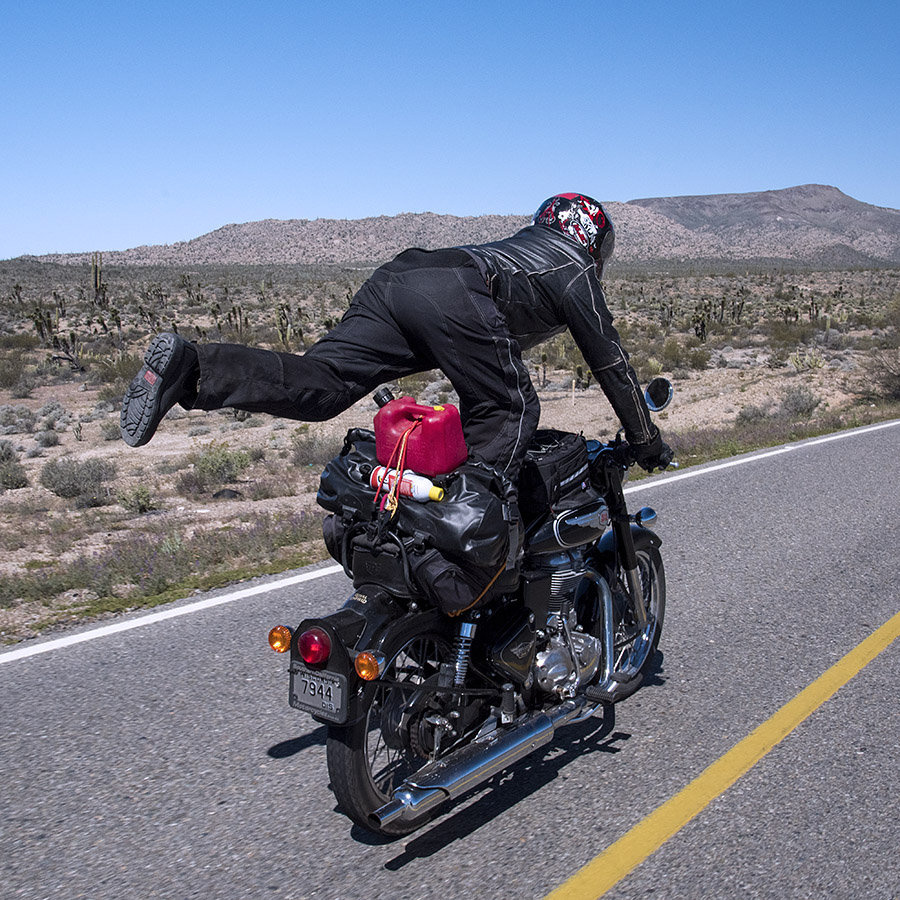I’ve ridden motorcycles through Baja probably 30 times or more over the last 30 years, and it’s unquestionably the best place to ride a motorcycle I’ve ever experienced. Many people are afraid to venture into the peninsula for fear of a breakdown. Hey, it happens, but it’s not the end of the world and it doesn’t happen often. They don’t call it adventure riding because it’s like calling for an Uber.
Not all “breakdowns” result in your motorcycle being nonoperational. Some are just mere annoyances and you truck on. A few breakdowns result in the bike not running, but there are usually ways to get around that. When it happens, you improvise, adapt, and overcome. Here are a few of mine.
Heritage Indeed
The first time I had a motorcycle act up was on my beloved ’92 Harley Softail. It started clanging and banging and bucking and snorting somewhere around Ensenada. I was headed south with my good buddy Paul from New Jersey. It was obvious something wasn’t right and we turned around to head back to the US. The Harley got me home, but I could tell: Something major had happened. The bike was making quite a bit of noise. I had put about 300 miles on it by the time I rode it back from Mexico.

One of the Harley’s roller lifters stopped rolling, and that turned it into a solid lifter. And when that happened, the little wheel that was supposed to rotate along the cam profile started wearing a path through the cam. And when that happened, the metal filings migrated their way to the oil pump. And when that happened….well, you get the idea. My 80-cubic-inch V-Twin Evo motor decided to call it quits after roughly 53,000 miles. It happens I guess. Nothing lasts forever.

Here’s where it started to get really interesting. My local Harley dealer wouldn’t touch the bike. See, this was around 2005 or so, and it seems my Harley was over 10 years old. Bet you didn’t know this: Many Harley dealers (maybe most of them) won’t work on a bike over 10 years old. The service manager at my dealer explained this to me and I was dumbfounded. “What about all the history and heritage and nostalgia baloney you guys peddle?” I asked. The answer was a weak smile. “I remember an ad with a baby in Harley T-shirt and the caption When did it start for you?” I said. Another weak smile.

I was getting nowhere fast. I tried calling a couple of other Harley dealers and it was the same story. Over 10 years old, dealers won’t touch it. I was flabbergasted. I tried as hard as I could, but there was no getting around it…the Harley dealer would not work on my engine. It was over 10 years old. That’s that; rules is rules. For a company that based their entire advertising program on longevity and heritage, I thought it was outrageous. A friend suggested I go to an independent shop. “It’s why they exist,” he said. So I did.
So, I went with Plan B. I took the Harley to a local independent shop, and they were more than happy to work on my bike. I could have the Harley engine completely rebuilt (which it needed, because those metal bits had migrated everywhere), or I could have it rebuilt with an S&S motor. I went with the S&S motor (the cost was the same as rebuilding the Harley engine), doubling the horsepower, halving the rear tire life, and cutting my fuel economy from 42 to 33 mpg.
Justin’s Countershaft Sprocket
On the very first CSC Baja trip, I was nervous as hell. The CSC bikes had received a lot of press and the word was out: CSC was importing the real deal, a genuine adventure touring motorcycle for about one sixth of what a GS 1200 BMW sold for in those days. The naysayers and keyboard commandos were out in force, badmouthing the Chinese RX3 in ways that demonstrated unbridled ignorance and no small amount of bias. And here we were, taking 14 or 15 guys (and one gal) who had bought new RX3 motorcycles that had literally arrived in the US just a few days before our departure. There was one thought in my mind as we headed south from Azusa that morning: What was I thinking? If the bikes started falling out on this first trip, it would probably kill the RX3 in America.

I need not have worried. None of the engines failed. We had a few headlights go out, but that’s not really a breakdown. And then, when we were about halfway down the Baja peninsula, I took a smaller group of riders to see the cave paintings at Sierra San Francisco. That trip involved a 140-mile round trip from Guerrero Negro into the boonies, with maybe 20 miles of that on a very gnarly dirt road. As we were returning, good buddy Justin’s RX3 lost its countershaft sprocket. We found it and Justin did a good enough MacGuyver job securing it to the transmission output shaft to get us back to Guerrero Negro, but finding a replacement was a challenge. We finally paid a machinist at the Mitsubishi salt mining company to make a custom nut, and that got us home.
On every Baja trip after that, I took a spare countershaft sprocket nut, but I never needed any of them after that one incident on Justin’s bike. Good buddy Duane had a similar failure, but that was on a local ride and it was easily rectified.
Jim’s Gearbox
Four or five Baja trips later, after we had ridden all the way down to Mulege and back up to the border, good buddy Jim’s transmission wouldn’t shift.

That’s the only breakdown I ever experienced anywhere on an RX3 that wouldn’t get us home, and that includes multiple multi-bike Baja trips, the multi-bike 5000-mile Western America adventure ride, the multi-bike 6000-mile ride across China, the 3000-mile circumnavigation around the Andes Mountains in Colombia, and quite a few CSC local company rides. One of the guys on that Baja ride lived in the San Diego area and he owned a pickup truck, so he took the bike back up to Azusa for us.
Biting the Bullet
A couple of years ago Joe Gresh and I did a Baja road test with Royal Enfield press bikes. One was the new 650 Interceptor twin (a bike I liked so much I bought one when I got home); the other was a 500 Bullet. The Bullet was a disaster, but it really wasn’t the bike’s fault. The dealer who maintained the press fleet for Royal Enfield (I won’t mention them by name, but they’re in Glendale and they’re known for their Italian bikes) did a half-assed job maintaining the bike. Actually, that’s not fair to people who do half-assed work (and Lord knows there a lot of them). No, the maintenance on this bike was about one-tenth-assed. It was very low on oil, it had almost no gas in it, the chain was loose and rusty, and on and on the writeup could go. The bike kept stalling and missing, and it finally gave up the ghost for good at the Pemex station just north of Guerrero Negro.

Fortunately for me, Gresh had one of those portable battery thingamabobbers (you know, the deals that are good for about 10 battery jumps) and it allowed us to start the bike. We bought a new battery that didn’t quite fit the bike in Guerrero Negro (big hammers solve a lot of problems), but the entire episode left a bad taste in my mouth for the Bullet and for the Glendale Ducatimeister.

That bike had other problems as well. The kickstand run switch failed on the ride home, and Gresh did an inflight missile mechanic bypass on it. Then, just before we made it back to my house in So Cal, the rear sprocket stripped. Literally. All the teeth were gone. That was another one I had never experienced before. The Bullet was sort of a fun bike, but this particular one was a disaster. We joked about it. The Bullet needs me, Gresh said.
John’s Silver Wing Leak
Ah this is another motofailure that tried but didn’t stop the show. On one of my earlier Baja forays, Baja John had a Honda Silver Wing. That’s a bike that was also known as the baby Gold Wing (it had all the touring goodies the Gold Wing had). It was only a 500 or a 650 (I can’t remember which) and it had no problem keeping up with the Harleys (but then, it doesn’t take much to keep up with a Harley).

The Silver Wing was a pretty slick motorcycle…it had a transversely-aligned v-twin like a Moto Guzzi and it had plenty of power. Unlike the Guzzi, the Silver Wing was water cooled and that’s where our problem occurred. John’s bike developed a coolant leak. I was a little nervous about that. We were more than halfway down the peninsula and headed further south when the bike started drooling, but John had the right attitude (which was not to worry and simply ignore the problem). The little Silver Wing was like a Timex…it took the licking and kept on ticking, and to my great surprise, it simply stopped leaking after another hundred miles or so. I guess it doesn’t really count as a breakdown.
John’s KLR 650 OPEC Bike
Baja John had another bike, a KLR 650, that developed a fuel petcock leak on another one of our Baja trips. As I recall, it started leaking on the return run somewhere around El Rosario. I get nervous around fuel leaks for the obvious reasons, but John stuck to his policy: Don’t worry, be happy.

We stayed in a hotel in Ensenada that night. The hotel had an attached enclosed parking structure, which immediately started to smell like the inside of a gas tank. Not that I’ve ever been inside a gas tank, but that parking garage pretty much had the aroma I imagine exists in such places.
John’s luck continued to hold, and we made it home without John becoming a human torch.
The Bottom Line
The bottom line is you basically need four things when headed into Baja:
-
-
- A tool kit.
- A good attitude that includes a sense of adventure.
- A well maintained motorcycle.
- Maybe some spare parts.
-
So there you have it. If you’d like to know more about riding in Baja, please visit our Baja page and maybe pickup a copy of Moto Baja.
If you’re headed into Baja, don’t leave home without BajaBound Insurance. They are the best there is. If you are nice, they might even fix you up with a cool BajaBound coffee mug!
Never miss an ExNotes adventure! Sign up here for free:



